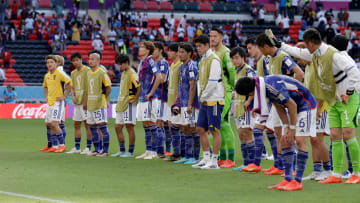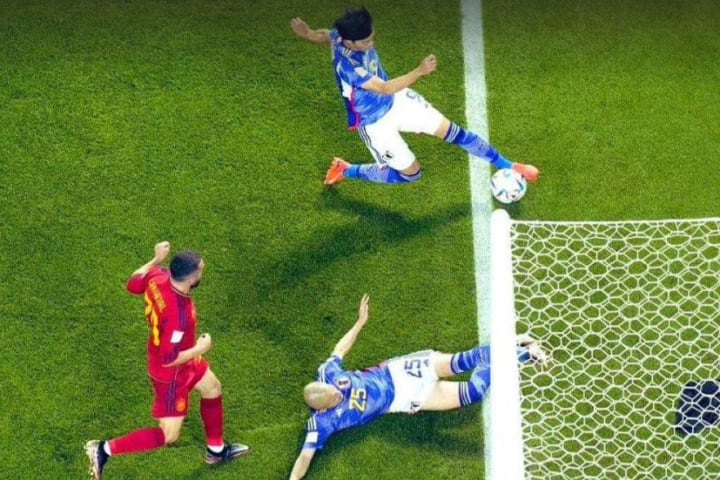
Why Japan’s goal was not out of play
It’s the biggest controversy of the World Cup so far.
Germany are out of the World Cup, and it’s all because of yet another questionable VAR decision from Japan’s 2-1 victory over Spain.
Hansi Flick’s side headed into the game needing a Spain win, and they were getting that in the first half, but Japan flipped things on their head straight after the break. Ritsu Doan fired the Samurai Blue level before Ao Tanaka tapped home, but it was the second goal that really had eyebrows raised.
In the blink of an eye, Japan turn things around! 🫣
Did it cross the line though…? 👀#ITVFootball | #FIFAWorldCup pic.twitter.com/Y8C5FdBSVK
— ITV Football (@itvfootball) December 1, 2022
There was nothing wrong with Tanaka’s finish, but before the pass across to him, the ball definitely looked to have gone out of play. Kaoru Mitoma looked to have got there a second too late, but after a lengthy VAR check, it was decided that the goal should stand.
The controversy ramped up as no VAR replays or confirmation of the incident was shown. Fans in the stadium had no idea what was going on and the viewers at home were none the wiser either as the only replay they had seen was from the broadcasters. In all of which, the ball looked to be out.
However, the decision-makers in the VAR station clearly believed they had the evidence to rule that the whole of the ball had not crossed the line – a Japan VAR decision, you could say.

Freezeframes of the incident appear to show the curvature of the ball hanging over the goal line, which means the ball would still be in play. The rule is similar to that of corners, where the ball does not need to be on the line but simply overhanging the line.
Further confirmation can be expected from the officials in due course.